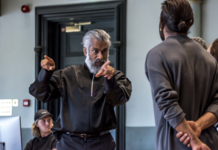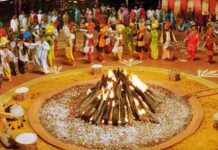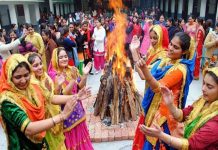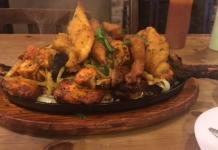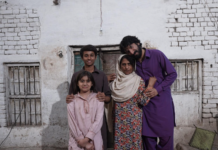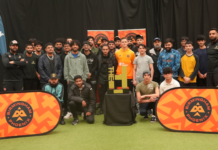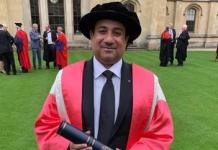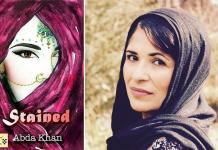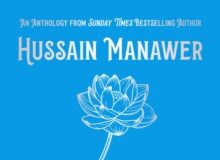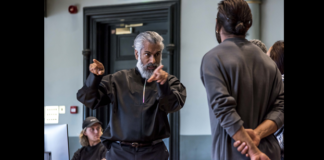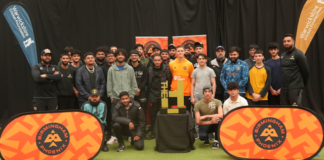May You Have a Blessed and Prosperous Festival of Light
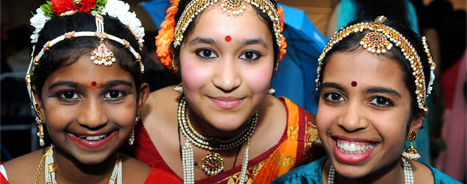
Diwali is considered a celebration of light triumphing over darkness. Held largely by Hindu, Sikh, and Jain communities the festival honours the positive aspects of life such as joy, love, forgiveness, light and knowledge. Although it has long been celebrated in Great Britain, what is Diwali like on the world stage? Countries such as Guyana, Fiji, Malaysia, Indonesia, Japan, Australia and the US all have their own variations on the joyous period. With Diwali fast approaching The Asian Today will look at how different countries laud the Festival of Light.
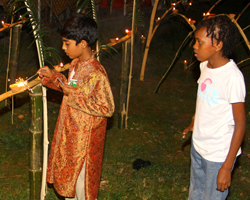 Trinidad and Tobago
Trinidad and Tobago
Diwali is considered a national holiday in Trinidad and Tobago, 43% of the population on the twin island state is ethnic Indians therefore Hindu celebrations are an integral part of the island’s tradition. Even government ministers participate in the celebrations. Residents can expect to gaze upon beautiful diyas (clay lamps) lit outdoors creating a dazzling display of light. They are normally held on bamboo sticks bent into various designs such as animals or flowers, a Trinidad custom. The area of Felicity, Chaguanas for instance is adorned with streamers and decorations to mark the auspicious day. The public will get into the festive mood and wear traditional Indian attire: Saris for the women, kurtas for the men and children dressed in shalwars or ghararas.
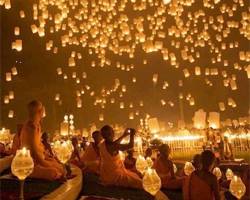
Known as Lam Kriyongh in Thailand, Diwali is actually intertwined into the country’s history. The story of Lord Rama defeating the demon King Lanka is rooted in Thai culture hence many of the customs of the day mirror that of traditional Indian practices. Diyas are made of Banana leaves and completed with candles, a coin and incense. They are then set afloat on a river like tiny illuminated boats creating a magical view on the water. People then exchange sweets and greetings. In Thailand emphasis on the day is laid on good will rather than extravagance.
On the Northern coast of South America, the state of Guyana turns the festival of light into a beautiful and eye catching spectacle. The cities twinkle in the night with hundreds of diyas and fairy lights beautifully decorated around homes. Some families will perform the auspicious Puja prayer normally on the third day of Diwali, where reverence is paid to the goddess of wealth, Lakshmi. Residents will thoroughly clean their homes and decorate them with small oil lamps, candles and trays of sweets. This effort of devotion is to receive blessings and prosperity; it is believed that the happier Lakshmi is with the home she visits the more she will bless the inhabitants with riches and good health.
 The absolute highlight of the celebration however is the annual grand Diwali Motorcade. The parade consists of spectacular floats in various shapes such as horses, ships and lotus flowers. It is an explosion of light and colour with thousands of fairy lights manipulated and shaped into Hindu gods and goddesses. There is even a competition where the best float is chosen by a panel of judges based on reactions from the crowd and technical achievements with the structure. The key goal of this elaborate observance is the preservation of Indian culture. Guyana, a former British colony, first welcomed Indian immigrants in 1838. Many Guyanese-Indians were forced to give up speaking Hindi and even their Hindu religion as an English identity was integral to finding employment. The ensuing result of this was that Indian culture slowly began to fade away in Guyana. Hence the passionate endeavours of the Guyanese public to honour the festival and maintain the Indian identity.
The absolute highlight of the celebration however is the annual grand Diwali Motorcade. The parade consists of spectacular floats in various shapes such as horses, ships and lotus flowers. It is an explosion of light and colour with thousands of fairy lights manipulated and shaped into Hindu gods and goddesses. There is even a competition where the best float is chosen by a panel of judges based on reactions from the crowd and technical achievements with the structure. The key goal of this elaborate observance is the preservation of Indian culture. Guyana, a former British colony, first welcomed Indian immigrants in 1838. Many Guyanese-Indians were forced to give up speaking Hindi and even their Hindu religion as an English identity was integral to finding employment. The ensuing result of this was that Indian culture slowly began to fade away in Guyana. Hence the passionate endeavours of the Guyanese public to honour the festival and maintain the Indian identity.
France
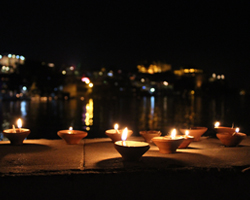 Like Guyana, France also uses Diwali as a platform to showcase and preserve Indian culture. The Maison de l’Inde (House of India) for instance, situated in the serene and beautiful part of Southern Paris, serves this purpose. The centre is seen as a symbol of integration. In co-operation with the Indian government the centre aims to promote equality, justice and freedom between France and India. It is only natural then that the centre holds a Diwali celebration to contribute to this effort. The centre holds activities with a more modern twist including classical and modern dancing, instrumental music, singing, fireworks and a large banquet.
Like Guyana, France also uses Diwali as a platform to showcase and preserve Indian culture. The Maison de l’Inde (House of India) for instance, situated in the serene and beautiful part of Southern Paris, serves this purpose. The centre is seen as a symbol of integration. In co-operation with the Indian government the centre aims to promote equality, justice and freedom between France and India. It is only natural then that the centre holds a Diwali celebration to contribute to this effort. The centre holds activities with a more modern twist including classical and modern dancing, instrumental music, singing, fireworks and a large banquet.
The Paris India Connection similarly builds bridges between French and Indian culture. The organisation is a social network of sorts where people can share and exchange ideas on culture, business, food and events. Cultural celebrations are at the heart of the organisation’s aims with the observance of Diwali. You can sample traditional Indian cuisine such as Samosas, royal vegetarian Biriyani and lovely cool Barfi. The dance floor is then set for a Bollywood party where people from a range of backgrounds are welcome. There is even the traditional Lakshmi puja, firecarckers, ghee dripping sweets and the gathering of friendly faces.
But if you yearn for a more traditional setting then head on over to your local temple where you can share sweets, set off firecrackers and light numerous diyas around the temple. The sights, smells and sounds of Diwali create a lovely jubilant atmosphere, showing that you can bring a little bit of India into one of the most richly cultured countries in the world.
 Diwali is entrenched in the culture and history of India. It involves a celebration of India’s past that is still observed in the modern day. Traditional practises include people graced in new clothes, sweets given, diyas lit and shopping sprees.
Diwali is entrenched in the culture and history of India. It involves a celebration of India’s past that is still observed in the modern day. Traditional practises include people graced in new clothes, sweets given, diyas lit and shopping sprees.
However various states of India have their own individual practices of the special day. New Dehli becomes crowded with shoppers where people rush to grab gifts, sweets and suit pieces. Far from being a consumer driven activity, shop owners regard good sales as a prediction of prosperous year. You can also spot renditions of the legend of Ramayana performed on streets over a few days, showcasing each stage of the story.
Rajasthan is famous for taking the importance of ‘light’ to a spectacular level. The city becomes illuminated with diyas, electrical lights and candles in homes. Fireworks add to this spectrum of colour against the night sky. Aside from this, sweets and gifts are exchanged which can be purchased at Rajasthan’s many fairs.
In Himachal Pradesh the mud walls of houses are cleaned and painted with cow dung and white clay. Pictures of animals and birds are then placed on the walls, this is due to the belief that Lakshmi the goddess of wealth visits and settles in homes that are clean and beautifully made. On the day of the festival soaked rice is powdered and shaped into designs, young girls worship this design with grass and camphor.
 But how is the festival of light celebrated in our homeland? Although not a bank holiday in Great Britain, Diwali is observed in many cities including Belfast, Birmingham, Edinburgh, Leicester, and London. Hindus comprise the fourth largest religious group in the UK therefore Diwali is a held in great esteem in many areas. Homes and offices will be thoroughly cleaned, sparklers and diyas are lit and sweets are exchanged. Women normally adorn their hands with Mendhi (Henna) decorations alongside wearing their finest clothes. Men will also dress to the nines. Many Indian businesses will see the day as the start to a successful financial year because of Diwali’s association with the goddess Lakshmi.
But how is the festival of light celebrated in our homeland? Although not a bank holiday in Great Britain, Diwali is observed in many cities including Belfast, Birmingham, Edinburgh, Leicester, and London. Hindus comprise the fourth largest religious group in the UK therefore Diwali is a held in great esteem in many areas. Homes and offices will be thoroughly cleaned, sparklers and diyas are lit and sweets are exchanged. Women normally adorn their hands with Mendhi (Henna) decorations alongside wearing their finest clothes. Men will also dress to the nines. Many Indian businesses will see the day as the start to a successful financial year because of Diwali’s association with the goddess Lakshmi.
Leicester for instance holds one of the biggest celebrations outside of India with an excess of 35,000 people attending. October 2014 will see the festival include Rangoli street art, a folk art from India where intricate patterns are drawn onto the ground. The exquisite craftsmanship creates a beautiful rainbow of colour against the dull grey pavements. There is also live cultural entertainment on stage and a dazzling fireworks display, emphasising the core reverence of light and colour.
London also sees vibrant jubilation in Trafalgar Square. The annual celebration continues this year with music and dancing from community groups and professional artists, food stalls selling traditional Indian food and many child friendly activities such as children’s theatre and a kid’s foot parade. The Asia Beauty Zone will be present where you can get pampered or lose yourself into the bargain filled Indian Bazaar. Want to look the part and dance until nightfall? Try the free sari dressing and Punghra dance classes to give your self an authentic Indian experience. Like so many countries before it Britain seeks to bring a little bit of India into the West through traditional Diwali practices with a modern twist.
We decided to ask the public how they celebrate Diwali in the UK and what the festival of light means to them:
“As a Punjabi-Hindu I’ll normally go the Mandhir and Gudwara for the Puja prayer. We then offer mithai (sweets) to family and friends and give money to the children. It lasts for about 3 days normally. Diyas are lit everywhere and we set off fireworks, though sometimes there’s a fireworks display at the temple.
“For me Diwali is a fresh start, a new beginning for everyone. There will be a mass spring cleaning in all homes for the Goddess Lakshmi to come and give her blessings. Houses will be spotless, this doesn’t bother me since I’m cleaning the house all the time!”
 “We’ll go to the temple in the morning to give our respects, set off fireworks with the family at home and share food with everyone. For us it lasts for 5 days and we keep a candle lit in our door for the whole period.
“We’ll go to the temple in the morning to give our respects, set off fireworks with the family at home and share food with everyone. For us it lasts for 5 days and we keep a candle lit in our door for the whole period.
“I even like to go to Diwali functions where there are parties with food and music. I’ve celebrated in India too where there are candles lit everywhere and rangoli paintings outside peoples homes. Diwali in India has more of a community feel whereas in England people tend to celebrate on their own.”

